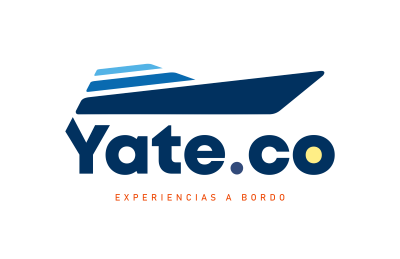International nautical terminology has been a key component of navigation since ancient times, facilitating clear and accurate communication between sailors of different nationalities. This specialized jargon originated with the earliest maritime civilizations and has evolved over the centuries to become standardized globally. Through organizations such as the International Maritime Organization (IMO), common terms and procedures have been established that allow mariners to understand each other regardless of their native language, which is critical in critical situations where safety is at stake.
Some of the most common terms in international navigation include words like "port" (left side of the boat), "starboard" (right side), and "stern" (rear of the boat). These terms help avoid confusion during maneuvers and communications, especially in poor visibility conditions or when action is needed quickly. Additionally, the international code of maritime signals, which consists of flags and lights, supplements verbal terminology by providing a visual form of communication that is understandable to all vessels on the high seas.
Today, uniformity in nautical terminology is vital not only for safety, but also for global trade and military operations. With the growth of international maritime traffic, ports and ocean routes depend on effective communication to prevent accidents and ensure efficiency in the transport of goods. The harmonization of these terms is a testament to the ongoing effort to improve cooperation and safety on the oceans, highlighting the importance of a universal maritime language in an increasingly connected world.
You may also be interested in: Vloggers to learn about the nautical world
Most popular international nautical terms
- Port: The left side of a vessel facing the bow (front of the boat). In international terminology, the red light is used to indicate the port side.
- Starboard: The right side of a boat facing the bow. This side is identified by the green light for night navigation.
- Bow: The front part of a boat. It is the point that cuts through the water when the boat is moving.
- Stern: The rear part of a boat. It is the end opposite the bow.
- Length (Overall): The total length of a boat from bow to stern. It is an important measurement for classifying the size of the boat.
- Beam: The maximum width of a boat. This measurement is key to determining the boat's stability and capacity.
- Draft: The depth of the boat from the waterline to the lowest part of its hull. The draft determines the amount of water the boat needs to float without touching the bottom.
You may also be interested in: Sailing from Colombia to Panama
- Quarter: The lateral section of the ship between the bow and half the length. It can refer to either port or starboard.
- Line/Rope: Refers to any rope or cable on board the boat, used for maneuvering and securing. Depending on its specific use, it may be called by different names, such as halyard (for hoisting sails) or sheet (for adjusting sails).
- Rudder: A device used to steer a boat. The rudder controls direction by changing the flow of water under the boat.
- Anchor: Device used to secure the boat to the seabed. The anchor prevents the boat from drifting due to wind or current.
- Logbook/Compass Box: Originally referred to the box containing the ship's compass. Today, it also refers to the book where the incidents of the voyage are recorded.
- Foremast: The mast closest to the bow on a boat with more than one mast. It is essential for sailing maneuvers.
- Wind Aft: When the wind blows from the stern of the boat, favoring progress in a straight line.
- Windward: The side of the boat from which the wind is coming. In contrast, the opposite side is called leeward.
You may also be interested in: Sailing to Antarctica
Who should know international nautical terminology?
- Sailors and Ship Crews
Sailors, from deck officers to common seamen, must be familiar with nautical terminology to operate the vessel safely and efficiently. Clear communication is essential during navigation maneuvers, anchoring, and in emergency situations. Using standard terms such as "port" and "starboard" eliminates ambiguity and ensures that instructions are followed correctly. - Captains and officers of the merchant navy
Captains and officers in the merchant marine are responsible for leading the crew and ensuring the safety of the vessel and its cargo. A thorough knowledge of nautical terminology allows them to coordinate complex maneuvers, communicate with ports and other vessels, and handle critical situations. It is also essential for complying with international regulations and avoiding sanctions. - Coast Guard and Rescue Personnel
Coastguards and rescue teams must be familiar with nautical terminology to conduct search and rescue operations at sea. In emergency situations, accurate communication with vessels in distress is key to coordinating rescue quickly and effectively. They must also be familiar with the International Code of Signals to interpret visual requests for assistance. - Maritime pilots
Maritime pilots, who are responsible for guiding large ships into ports or through difficult channels, must be familiar with international nautical terminology to communicate with crew and port controllers. Their knowledge makes it possible to prevent accidents in high-traffic areas and to safely maneuver large vessels. - Navigation students and teachers
Those who are training in nautical academies or studying navigation at maritime universities must learn the terminology as an essential part of their preparation. The teachers at these institutions also play a crucial role in passing on this knowledge to the new generations of seafarers and maritime professionals.
You may also be interested in: Basic first aid at sea
- Recreational boating enthusiasts
Even if they are sailing for pleasure, yacht and recreational boat owners need to know basic terminology to ensure safety during their trips. Understanding nautical signs, navigation rules and maneuvering terms is essential to avoid accidents and enjoy boating responsibly. - Port staff and maritime traffic controllers
Port personnel and maritime traffic controllers must be familiar with nautical terminology to communicate with vessels arriving and departing from ports. Their role in coordinating maritime traffic and ensuring port safety depends on their ability to correctly interpret and use nautical terms in their communications. - Inspectors and maritime authorities
Inspectors who regulate vessels and maritime authorities who oversee compliance with international laws also need a solid knowledge of nautical terminology. This enables them to carry out safety inspections, investigate incidents and enforce regulations correctly.


